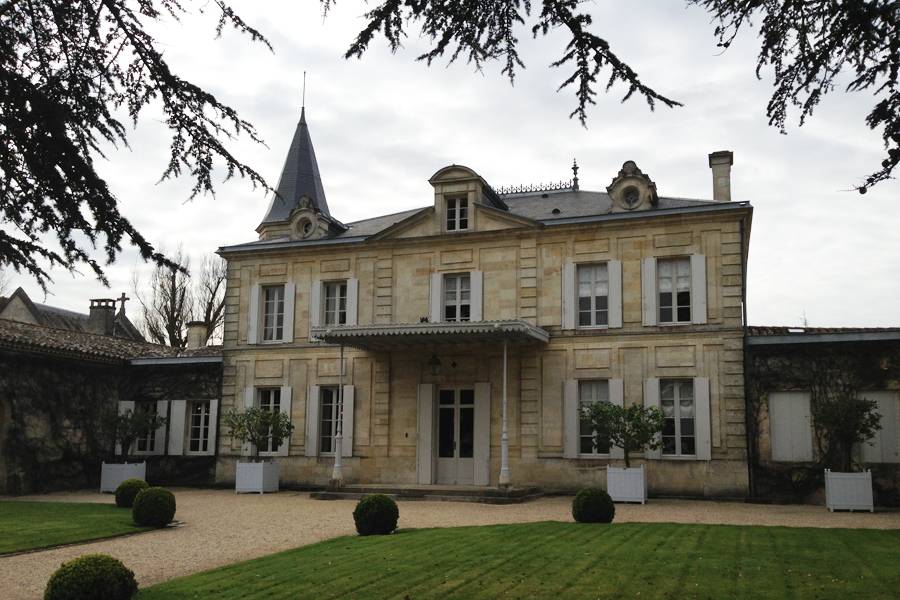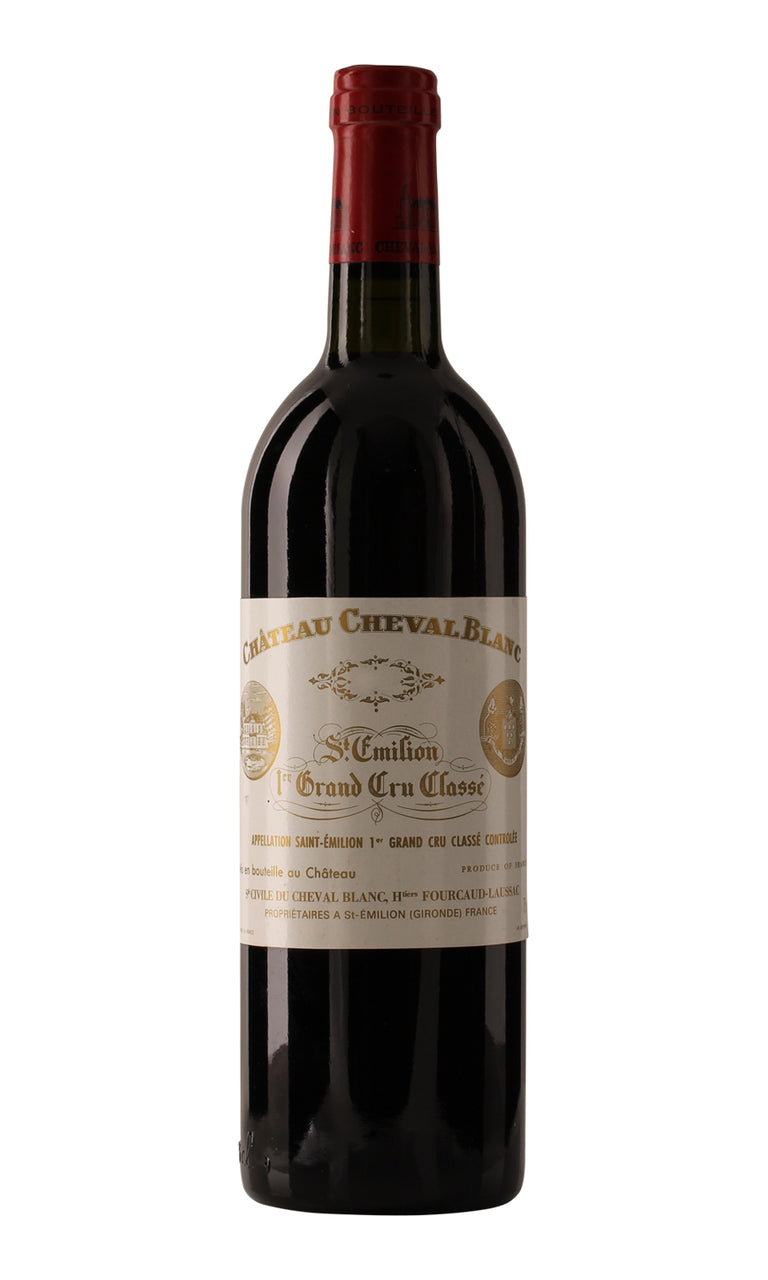- Colour Red
- Producer Château Cheval Blanc
- Region St Emilion
- Drinking 2008 - 2020
- Case size 12x75cl
- Available Now
1996 - Ch Cheval Blanc 1er Grand Cru Classé St Emilion - 12x75cl
- Colour Red
- Producer Château Cheval Blanc
- Region St Emilion
- Drinking 2008 - 2020
- Case size 12x75cl
- Available Now
Select pricing type
Need help? Call +44 (0)20 7793 7900 or email wine@goedhuiswaddesdon.com.
-
Neal Martin, October 2016, Score: 88
...
-
Robert Parker, April 1997, Score: 89-90
It appears that this great estate could make a more concentrated and complex wine if a few risks were taken. Moreover, couldn't the selection for the grand vin be more severe? When Cheval Blanc does everything right (1982, 1983, 1985, and 1990), this is one of the most exotic, compelling wines made in the world, yet recent vintages, while obviously delicious, have been lighter than expected for one of Bordeaux's most famous wines. Admittedly, Cheval Blanc has a tendency to put on weight, but my instincts suggest that a stricter selection (charge higher prices if necessary) will result in more persuasive and authoritative wines. Nevertheless, the moderately dark purple-colored 1996 reveals an evolved blueberry and redcurrant, coconut, spicy new oak-scented bouquet, medium body, soft, round, savory flavors, and a clean finish. It lacks concentration and depth, but this wine is still seductive, albeit too compressed, polite, and under-sized. The 1996 Cheval Blanc should drink well early, and last for 15 years. Given the recent higher quality efforts at Ausone, it is easy to imagine that Ausone may begin to outdistance Cheval Blanc in head to head competition. Drink: 1997-2012.
-
Robert Parker, January 1998, Score: 90-93
This wine has put on considerable weight during cask aging and looks exceptionally strong, not surprising given the fact that 1996 is considered a strong vintage for Cabernet Franc. The 1996 Cheval Blanc exhibits a dark, dense garnet/plum color, as well as a hedonistic, smoky, exotic, sweet coconut, black plum, and cherry-scented nose intermingled with smoky oak (about 25% of the new oak is from Taransaud). The wine is ripe and complex, with rich, sweet layers of fruit that hit the palate with outstanding purity and ripeness. It is much more expansive and fatter than when I first tasted it in spring following the vintage. Sixty percent of the crop was used in the grand vin, with 20% of the balance going into the second wine, and the rest sold in bulk. This should turn out to be a sensational Cheval Blanc, rivaling the gorgeous 1995. Anticipated maturity: 2001-2020. Last tasted 11/97.
-
Robert Parker, February 1998, Score: 90-93
Typical for this estate's wines, the 1996 has put on considerable weight and flesh since I first tasted it. Forty percent of the 1996 crop was declassified, but the quality of the Cabernet Franc (which often makes up 50%-60% of the final blend) was high. Yields were below 30-35 hectoliters per hectare. This deep garnet/plum-colored Cheval Blanc offers a gorgeously exotic, sweet, smoky, coconut, menthol, jammy raspberry and blackberry-scented nose. Medium body, ripe fruit, outstanding concentration, and a succulent texture place this wine high up on the qualitative hierarchy. An intriguing coffee bean and chocolatey sweetness can be found in the wine's finish. This appears to be an impressive, savory, multidimensional Cheval Blanc that is growing in stature and weight as it ages in cask. Anticipated maturity: 1999-2020.
-
Robert Parker, April 1999, Score: 90
The elegant, moderately weighted 1996 Cheval Blanc reveals a deep garnet/plum, evolved color. Quintessentially elegant, with a complex nose of black fruits, coconut, smoke, and pain grille, this medium-bodied wine exhibits sweet fruit on the attack, substantial complexity, and a lush, velvety-textured finish. It is very soft and evolved for a 1996. Anticipated maturity: 2000-2015.
Producer
Château Cheval Blanc
Several years ago, 10 of the world's top wine specialists were asked if they could own a wine estate, which one would it be. At least 5 of them said Château Cheval Blanc. Indeed, this château is like no other. Wonderfully silky and smooth yet powerful, Cheval Blanc is often approachable when young yet has the capacity to age for many years. Its unusually high proportion of Cabernet Franc (usually 50% or more) accompanied by...Read more
Several years ago, 10 of the world's top wine specialists were asked if they could own a wine estate, which one would it be. At least 5 of them said Château Cheval Blanc. Indeed, this château is like no other. Wonderfully silky and smooth yet powerful, Cheval Blanc is often approachable when young yet has the capacity to age for many years. Its unusually high proportion of Cabernet Franc (usually 50% or more) accompanied by Merlot has undoubtedly contributed to its allure.Read less

Region
St Emilion
South of Pomerol lies the medieval, perched village of St Emilion. Surrounding St Emilion are vines that produce round, rich and often hedonistic wines. Despite a myriad of soil types, two main ones dominate - the gravelly, limestone slopes that delve down to the valley from the plateau and the valley itself which is comprised of limestone, gravel, clay and sand. Despite St Emilion's popularity today, it was not until the 1980s to early 1990s that attention was brought to this region. Robert Parker, the famous wine critic, began reviewing their Merlot-dominated wines and giving them hefty scores. The rest is history as they say. Similar to the Médoc, there is a classification system in place which dates from 1955 and outlines several levels of quality. These include its regional appellation of St Emilion, St Emilion Grand Cru, St Emilion Grand Cru Classé and St Emilion Premier Grand Cru Classé, which is further divided into "A" (Ausone and Cheval Blanc) and "B" (including Angélus, Canon, Figeac and a handful of others). To ensure better accuracy, the classification is redone every 10 years enabling certain châteaux to be upgraded or downgraded depending on on the quality of their more recent vintages.




